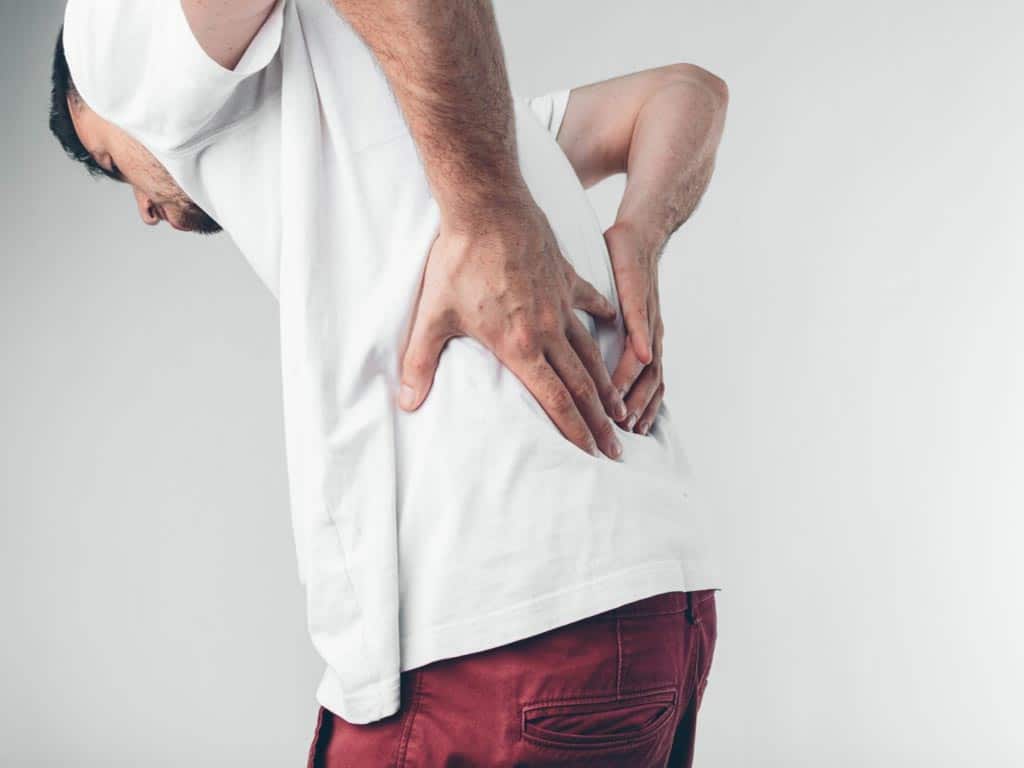
Sacral pain refers to discomfort in the sacrum, which is the triangular bone at the base of the spine. It is often characterised by a dull ache or sharp, stabbing sensation in the lower back or buttock region. Additionally, sacrum pain can be caused by various factors, including injury, degenerative conditions, and nerve compression. Treatments for this condition may include physical therapy, medications, and TENS therapy. However, people should consult a doctor to determine the best course of action.
People with sacrum pain often experience significant discomfort and limitations in their daily lives. The pain can affect their ability to sit, stand, or engage in physical activities. It may also impact their sleep, mood, and overall quality of life. Simple tasks like bending over or lifting objects can become challenging and painful. Seeking medical attention and appropriate treatment is crucial for improving the individual’s well-being. This article will present about sacrum pain, including its causes and treatments.
What Is Sacral Pain?
Sacral pain is common and causes discomfort in the lower spine area called the sacrum. It can result in localised pain in the lower back, buttocks, or hips and may also radiate down the legs. This condition can vary in intensity, from mild discomfort to severe pain, which can hinder a person’s daily activities.
The sacroiliac joints connect the sacrum to the pelvis and may become unstable, leading to pain in the sacral region. This pain may also originate from the lower back or other sources, such as irritation of the sciatic nerve. Moreover, activities that involve bending, twisting, or sitting for long periods can worsen the pain in the sacrum.
Properly diagnosing sacral aches is crucial for effective treatment. Health professionals perform physical examinations to evaluate the range of motion, muscle strength, and unusual movement in the sacroiliac joints. Additionally, they may use imaging tests such as X-rays or Magnetic Resonance Imaging (MRI) to detect any structural abnormalities. These tests help identify the underlying cause of the pain.
Risk Factors For Sacroiliitis
- Inflammatory conditions: individuals with underlying inflammatory conditions such as ankylosing spondylitis, psoriatic arthritis, or reactive arthritis.
- Trauma or injury: injury to the sacroiliac joints, such as due to a fall or accident, can increase the risk of sacroiliitis.
- Infection: bacterial or viral, can lead to an inflammation of the sacroiliac joints.
- Gender: men are more likely to develop sacroiliitis than women.
- Age: sacroiliitis commonly affects individuals between the ages of 20 and 40, although it can occur at any age.
- Family history: having a family history of sacroiliitis or other forms of inflammatory arthritis may increase the risk.

What Are The Causes Of Sacral Pain?
Sacral pain can be caused by various factors, including injury, degenerative conditions, and nerve compression. Firstly, injury to the sacroiliac joints, which connect the sacrum to the pelvis, can lead to sacral aches. This can occur due to physical trauma or overuse, causing inflammation and dysfunction in the joints.
Secondly, degenerative conditions can also contribute to sacral discomfort. Degeneration of the sacroiliac joints or the lumbar spine can result in pain signals being sent to the sacrum. This can be caused by age-related wear and tear, autoimmune conditions, or inflammatory arthritis. MRI and physical examination can help in diagnosing the underlying cause of the condition.
Lastly, nerve compression can be another source of sacral aches. The sacral nerves and spinal nerve roots located near the sacrum can become compressed due to various health conditions. These include spinal stenosis or disc herniation. This compression can cause radiating pain, known as radicular pain, which can extend down the leg along the sciatic nerve.
Symptoms
The most common symptom of sacroiliitis is pain in the lower back, which can be sharp and severe. This sharp pain is often worsened by prolonged sitting or standing and when rotating the hips. Individuals may also experience pain and discomfort in the buttocks or legs, making it difficult to perform normal daily activities.
In addition to pain, people with sacroiliitis often experience stiffness that lasts for more than an hour. This stiffness can make it challenging to engage in physical activity. It can also lead to limitations in range of motion, making movements such as bending, twisting, or lifting objects more difficult.

What Are The Treatments For Sacral Pain?
People who experience sacral pain often find that it significantly impacts their quality of life. Fortunately, there are several treatment options available that can help alleviate the discomfort and improve daily functioning. For instance, physical therapy helps improve strength and flexibility in the muscles and joints around the sacroiliac area.
In addition, medications play a crucial role in managing back discomfort. Healthcare professionals often prescribe muscle relaxants and anti-inflammatory medications to help alleviate pain and reduce inflammation in the affected area. These medications work by relaxing the muscles and reducing pain-causing chemicals around the sacroiliac joints.
Furthermore, people can utilise Transcutaneous Electrical Nerve Stimulation (TENS) therapy for sacral aches. This non-invasive treatment involves the use of a small device, like iTENS, that delivers low-level electrical currents to the skin. These electrical impulses help to disrupt pain signals and provide temporary pain relief. Additionally, people can use TENS therapy at home or on the go as part of a comprehensive treatment plan.
Ways To Prevent Sacroiliitis
There are several ways individuals can help prevent sacroiliitis condition. Maintaining a healthy lifestyle can minimise the risk of sacroiliitis. By incorporating regular exercise into their routines, people can strengthen the muscles that surround and support the sacroiliac joints. Additionally, maintaining a healthy weight can alleviate stress on the joints.
Moreover, practising good posture can also play a crucial role in preventing sacroiliac joint dysfunction. By maintaining a neutral spine position and avoiding excessive bending or twisting, individuals can reduce joint pains and strains. It is also important to lift heavy objects using the legs and not the back.
Conclusion
Sacral pain is a common medical condition that can cause discomfort in the lower spine, known as the sacrum. It can range from mild discomfort to severe pain and can hinder normal activities. This pain can be caused by various factors, such as injury to the sacroiliac joints, degenerative conditions, or nerve compression. Proper diagnosis is crucial for effective treatment, which may include physical therapy, medication, and non-invasive treatments like TENS therapy.
Recognising the symptoms of sacroiliitis is crucial for early intervention and management of the condition. These include lower back pain, stiffness, and limited range of motion. By incorporating preventive measures into daily routines, individuals can reduce the risk of chronic pain in the back. This includes maintaining a healthy lifestyle through regular exercise, maintaining a healthy weight, and practising good posture. By taking these proactive steps, people can alleviate stress on the sacroiliac joints and promote overall spinal health.




















